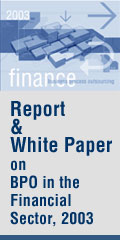|
|
Global Credit Market Dislocation: S&P puts the key factors in perspective
As in past periods of market stress, today's market dislocation is accompanied by sizable helpings of confusion and misunderstanding. Naturally, part of the confusion relates to why market distress is occurring. More interestingly, though, part also relates to the differing degree to which it has affected different sectors of the fixed-income capital markets, according to a recent report by Standard & Poor's Ratings Services.
"On the issue of 'why,' the short answer seems to be that leverage plus speculation fueled by 'financial engineering' and derivatives such as collateralized debt obligations (CDOs) were the primary drivers," said Mark Adelson, Standard & Poor's chief credit officer. Financial engineers started with essentially manageable risks from the residential mortgage sector, but then concentrated and amplified those risks. Hindsight reveals that they created securities that were vulnerable to rapid and severe deterioration far beyond what market participants had anticipated.
The issue of how strongly the market distress has affected different sectors is trickier to assess. Many segments of the capital markets have felt the impact of stress. However, the severity of that impact has not been uniform. It has been most pronounced in two sectors: CDOs of structured finance instruments (SF CDOs) and asset-backed securities (ABS) backed by second-lien mortgage loans. In both, we believe there are likely to be widespread defaults of securities that initially carried ratings of 'AAA'.
By contrast, the first-lien subprime mortgage ABS sector has displayed less deterioration. In our view, this sector likely will suffer widespread defaults of most securities initially rated at the 'BBB' and 'A' levels, but few defaults of securities initially rated at the 'AAA' level.
The general media has blurred this distinction at times by using the term "subprime securities" to refer indiscriminately to both SF CDOs and first-lien subprime mortgage ABS. That confusion may have spread misunderstanding about the true causes and triggers of the current problems in the housing and financial sectors. In the report, Mr. Adelson explains that if policymakers misunderstand the true causes, they cannot frame effective policy responses, and if investors misunderstand the true causes, they cannot frame effective defensive strategies. "Only with a more incisive understanding of what has happened can both groups craft effective policies and strategies," he said.
(This is press release of Standard & Poor's)
Global asset-backed securities (ABS) Bond Outlook Study
Currency Management to help achieving cost & operational efficiencies
Top trends impacting global retail banking industry
Ease of use with security is key to mobile banking success
Uncertainty to dominate global securities & investments in 2008
Highest levels of political and economic uncertainty in 2008
CLICK FOR MORE FEATURES & STORIES

|
|


|



